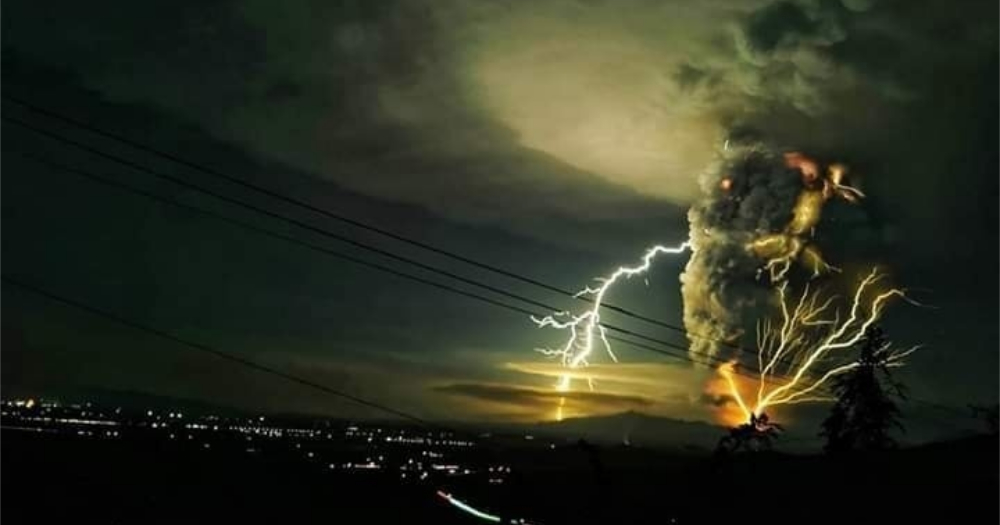The Philippine authorities warned on Jan. 12 that a volcano near the capital Manila could erupt imminently, hours after it sent a massive column of ash skyward that grounded flights and coated towns across the region in fine dust.
#TaalVolcano foto desde cabina 🛫 via @tomhamilton pic.twitter.com/Vsj16CPX30
— IngGeofisico🌪 (@ChaacTlaloc) January 12, 2020
Massive column of ash emitted & thousands evacuated
Thousands of people living near the Taal volcano, a popular tourist attraction set in the centre of a picturesque lake, were evacuated from their homes as it spewed ash, rumbled with earthquakes and lightning exploded above its crest.
15km of column of ash was reported and several volcanic tremors were felt within the vicinity of the volcano, which is popular among tourists for its scenic view.
The local disaster office said it had evacuated over 2,000 residents living on the volcanic island, which lies inside a bigger lake formed by previous volcanic activity.
Solidum said officials will also order the evacuation of people living on another island nearby if the situation worsens.
"Ash has already reached Manila... it is dangerous to people if they inhale it," he told AFP.
 Photo from @stormchasersPH/Facebook.
Photo from @stormchasersPH/Facebook.
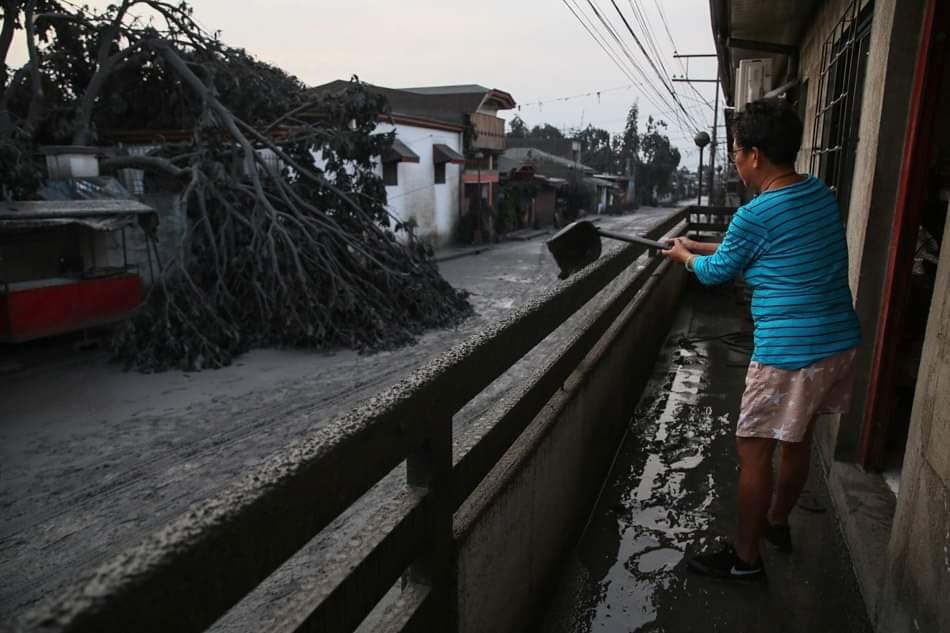 Photo from @stormchasersPH/Facebook.
Photo from @stormchasersPH/Facebook.
A "hazardous explosive eruption is possible within hours to days", the nation's seismological agency warned, adding that the ash could pose a risk to aircraft.
Lightning storms within the ash column
Along with the enormous amount of ash spewed out, active volcanic activities at Taal have also created a terrifying-looking lightning storm inside the volcano.
The flashes of lightning were created by the electrical discharge from the volcano, when the ash particles collide with each other and gain charge or generate charge imbalance.
Volcanic plumes hitting high altitudes can also contribute to such a phenomenon which suggests the larger the ash plumes, the more dangerous a volcanic eruption.
https://twitter.com/Unexplained/status/1216428788533407744
https://twitter.com/gunsnrosesgirl3/status/1216400697505341442
Here are some photos taken when the bolts of lightning struck Taal:
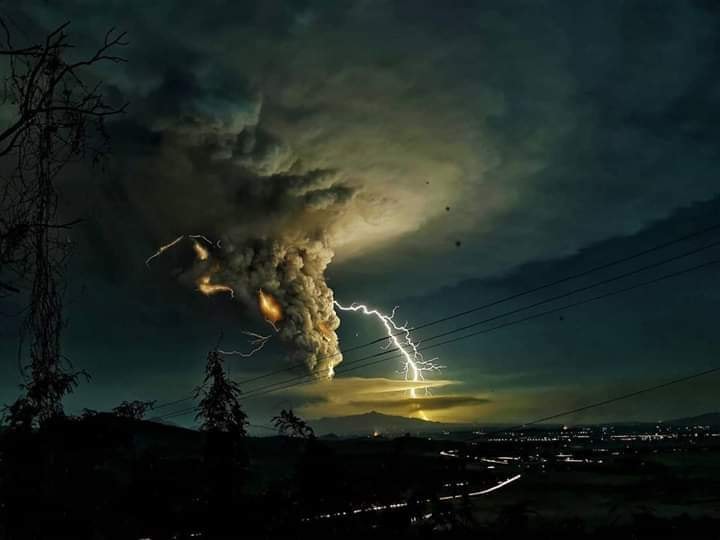 Photo from Philippine Weather System/Pacific Storm Update/Facebook.
Photo from Philippine Weather System/Pacific Storm Update/Facebook.
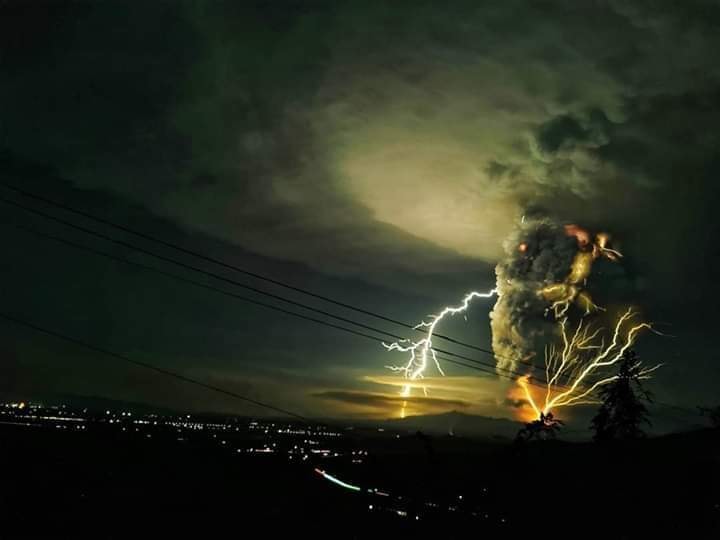 Photo from Philippine Weather System/Pacific Storm Update/Facebook.
Photo from Philippine Weather System/Pacific Storm Update/Facebook.
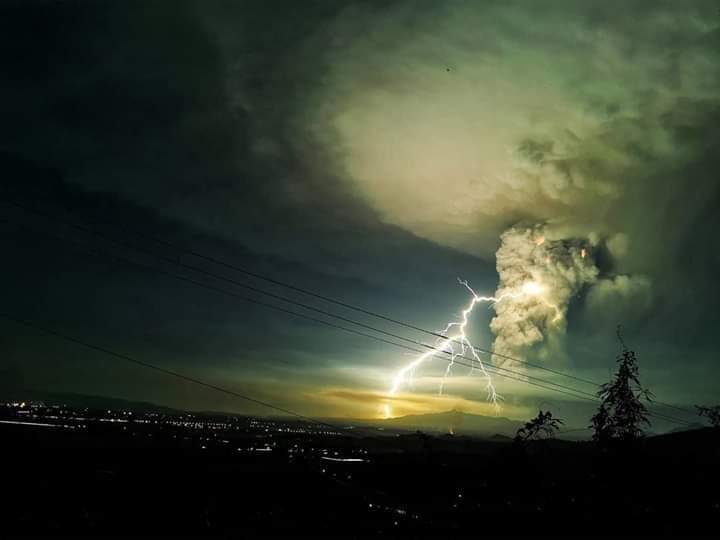 Photo from Philippine Weather System/Pacific Storm Update/Facebook.
Photo from Philippine Weather System/Pacific Storm Update/Facebook.
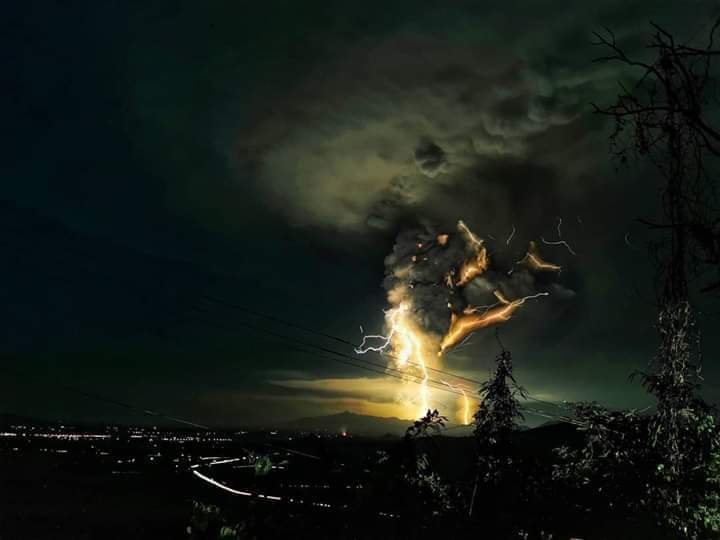 Photo from Philippine Weather System/Pacific Storm Update/Facebook.
Photo from Philippine Weather System/Pacific Storm Update/Facebook.
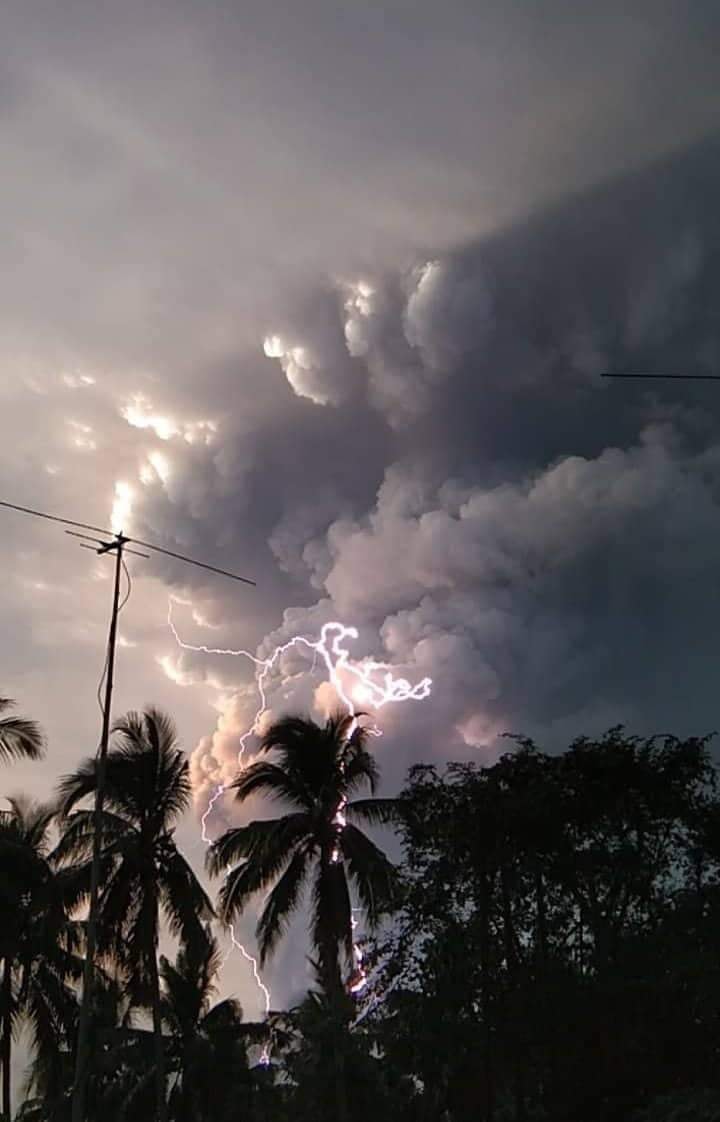 Photo from Philippine Weather System:Pacific Storm Update/Facebook.
Photo from Philippine Weather System:Pacific Storm Update/Facebook.
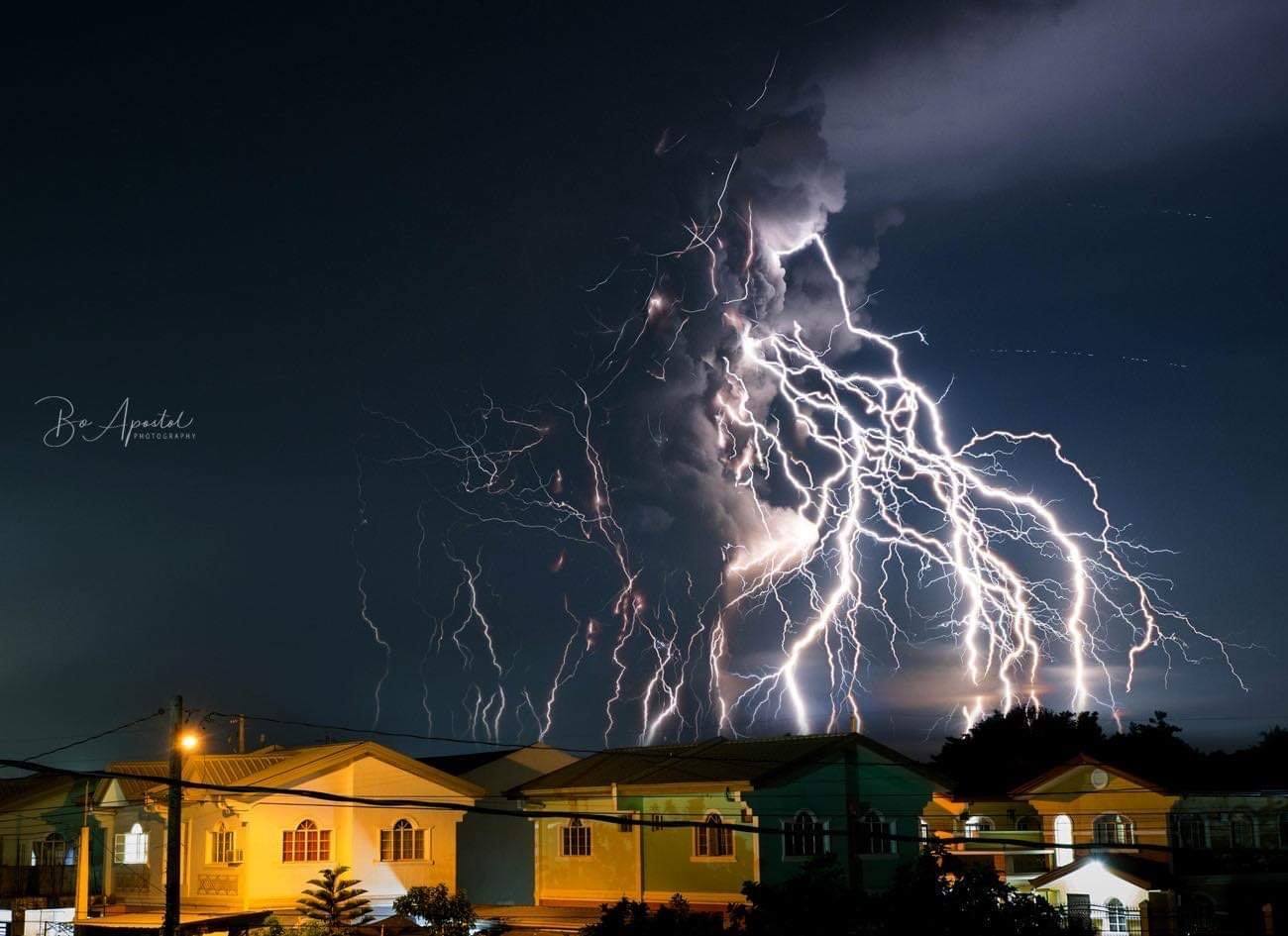 Photo by Bo Apostol via Facebook.
Photo by Bo Apostol via Facebook.
Alert level raised as hazardous eruption feared
The Philippine Institute of Volcanology and Seismology (PHIVOLCS) described Taal volcano as entering a period of "intense unrest" and has progressed into magmatic eruption with lava spewing out from it, along with thunder and flashes of lightning.
Government seismologists recorded magma moving towards the crater of Taal, one of the country's most active volcanoes located 65 kilometres (40 miles) south of Manila.
The alert level has been raised to four, with the maximum (Five) signalling that a hazardous eruption might happen within a few days.
Apart from the mass evacuation of local residents, aviation officials have ordered a suspension of flights in to and out of the capital's Ninoy Aquino International Airport, after the ash cloud was reported to have reached 15km.
Taal's last eruption was in 1977. While Taal is one of the smallest volcanoes in the world, it is the second most active volcano in the Philippines.
Earthquakes and volcanic activity are not uncommon in the Philippines due to its position on the Pacific "Ring of Fire", where tectonic plates collide deep below the Earth's surface.
In January 2018, Mount Mayon displaced tens of thousands of people after spewing millions of tonnes of ash, rocks, and lava in the central Bicol region.
Top photo from Philippine Weather System/Pacific Storm Update/Facebook
If you like what you read, follow us on Facebook, Instagram, Twitter and Telegram to get the latest updates.
